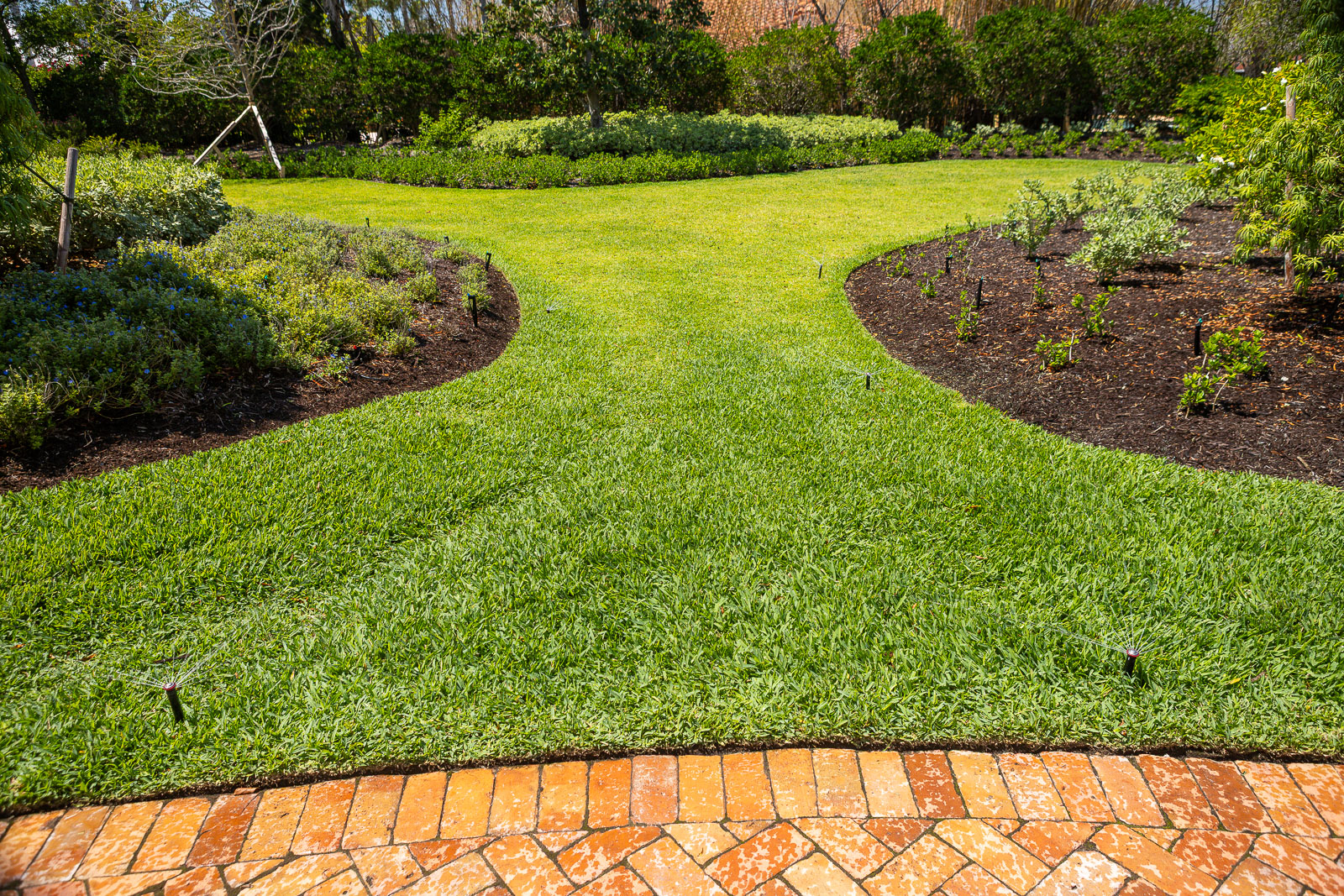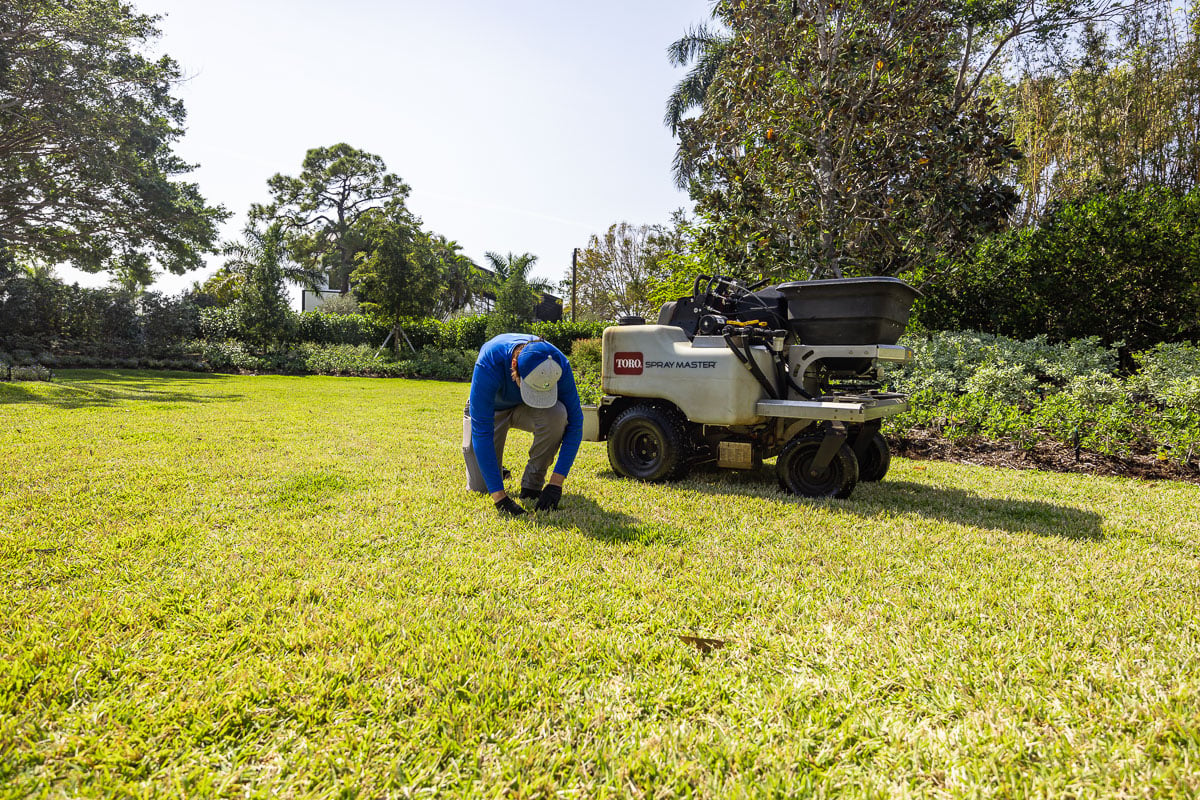
How to Spot, Prevent, and Treat Chinch Bug Damage in Your Lawn Before It Spreads
If you’re keeping a list of things you need to worry about that you can’t even see, here’s another one: chinch bugs.
This tiny but destructive lawn pest has been especially bad here in Sarasota this year, gobbling up and ruining big patches of lawn.
They can devour a healthy lawn faster than your brother-in-law cleared your buffet table last Thanksgiving, turning your lush green grass into an ugly patchwork of yellow and brown.
What are the keys to chinch bug infestation control? Keep your irrigation system in great shape so your lawn doesn’t have the dry spots chinch bugs love. Apply a chinch bug preventative treatment before the dry season begins. Catch any chinch bug damage signs quickly, so you can kill any infestation before the problem gets worse.

Keep reading to learn more about how to prevent chinch bugs and what to do if you have them, including:
- First, What Are Chinch Bugs?
- How to Spot Chinch Bugs
- Chinch Bug Damage Signs
- How to Prevent Chinch Bugs: Keep Your Irrigation System Maintained
- Prevent Chinch Bug Spread With a Healthy Lawn
- Treating Chinch Bugs in the Lawn
First, What Are Chinch Bugs?
These tiny bugs with the funny name are among Florida’s most destructive lawn insects.
They look innocent enough. They’re black with white front wings that have a distinctive triangular black mark. And they’re tiny — just 1/8 to 1/4 inch long. But don’t let their small size fool you.
Chinch bugs are real lawn villains.
First, they use their mouthparts to puncture grass blades and suck out the moisture and all the nutrients.
Then, as if that’s not bad enough, they inject a toxin while they’re feeding that disrupts the grass's ability to transport water and nutrients, an important process called translocation.
Your poor grass doesn’t stand a chance, wilting, turning yellow and then brown.
They can really destroy your lawn.
Chinch bugs are most active in hot, dry weather and thrive in sunny areas.
These pests thrive in Sarasota’s warm climate, feeding relentlessly on your turf. If you let them chow down, chinch bugs can cause extensive damage, turning your lush lawn into a patchwork of dead grass in just a week or two.

If you have St. Augustine or zoysia grass, as many of us do, your lawn is extra appealing to chinch bugs. They love the stuff.
They also love lawns with sandy soil that drains well. Remember, they like things dry.
If you’re reading this and thinking your lawn is the perfect hangout for chinch bugs, you’re right.
Bonus: Here in Sarasota’s warm climate, chinch bugs are active nearly year-round.
All this means it’s extra important to be on the lookout for signs of chinch bug damage.
How to Spot Chinch Bugs
Grab your magnifying glass, microscope or those snazzy new reading glasses you bought at the pharmacy checkout. These pests are really hard to see.
Here at Tropical Gardens, we actually get on our hands and knees to look for them, which isn’t the most dignified strategy, but it works.
If you still watch old “Bill Nye the Science Guy” re-runs, you’ll love this chinch bug trick:
Take an empty coffee can, cut off both ends and sink it halfway into the ground. Fill it with water and wait five minutes. If you have chinch bugs, they’ll float to the top.
You can also cut a small section of turf and place it in a bucket of water. If chinch bugs are in there, you’ll see them floating to the surface.
Note: it might look to your significant other that you’re goofing around in the yard playing with buckets and water. Be prepared to defend the importance of science.

Chinch Bug Damage Signs
You won’t notice actual chinch bugs easily but you can definitely spot their damage.
You’ll see a circle of lawn damage that starts pale yellow then turns to brown as the grass dies. And it gets worse fast, spreading across the lawn as the bugs continue to feast.
The chinch bug damage signs will often start in dry, sunny areas of your lawn. The patches of yellow and brown expand, and your grass could die completely.
How to Prevent Chinch Bugs: Keep Your Irrigation System Maintained
Chinch bugs love a dry, under-watered sunny lawn, so irrigation system maintenance is crucial. All it takes is one clogged irrigation head and a resulting dry spot to start a chinch bug party.
Your irrigation system should be on a regular maintenance program, inspected by irrigation pros either once a month or once every two months. You don’t want your irrigation system suddenly failing during the hottest, driest season of the year. You can almost hear the chinch bugs excitedly whispering about it.

Prevent Chinch Bug Spread With a Healthy Lawn
Your best defense against destructive chinch bugs is a healthy lawn and good lawn care practices. Weak or stressed grass is more vulnerable to chinch bug attack. Follow these tips:
Mow at the Right Height
How to prevent chinch bugs? Avoid cutting your grass too short, as this weakens your lawn and makes it more vulnerable to lawn pests like chinch bugs. Keep your grass at a height of 3–4 inches to promote deeper, stronger roots. And don’t cut more than a third of a blade off at once.

Fertilize Wisely
Over-fertilizing with too much nitrogen can actually attract chinch bugs. Use a balanced, slow-release fertilizer formula and follow the recommended application rates.

Dethatch Regularly
Thatch, that dense, spongy layer of shoots, stems, and roots that accumulates between your grass and the soil, is like a big welcome mat for chinch bugs. It’s a perfect hiding place for them to live, breed, and feed. If your lawn’s thatch layer is more than half an inch thick, it's time to dethatch.
That thick layer of thatch can also make insecticide treatments less effective because the spray soaks into the thatch instead of reaching the grass and bugs below.
How to Get Rid of Thatch?
Lawn aeration uses a machine to pull out tiny cores of soil from your lawn, breaking down thatch and allowing water and oxygen to get to the lawn’s roots again.
It’s smart to have your Sarasota lawn aerated once a year to keep those grass roots breathing and to keep thatch from building up and creating a home for dastardly chinch bugs.
Aeration should be done when your grass is actively growing, ideally in spring here in Sarasota, at the beginning of the growing season.

Watch for Chinch Bug Damage Signs
If you see a patch of yellow or brown lawn, don’t ignore it. Chinch bugs move fast, so if it’s these hungry pests causing the damage, you’ll want to get it treated right away.
Better yet, let us keep an eye on things.
Tropical Gardens account managers walk your property every month, regularly patrolling for lawn-damaging annoyances like chinch bugs.
We’ll send you photos of any problem areas we spot — along with our plan to fix it.
When it comes to identifying signs of chinch bug damage, it’s key to have skilled pros on the job. Yellow or brown patches in your lawn can be caused by lots of different things, from drought to disease to insects to over-fertilizing.

Trained lawn care experts will thoroughly inspect your property, confirm the presence of chinch bugs, and develop a customized treatment plan.
Which brings us to…
Treating Chinch Bugs in the Lawn
Tropical Gardens crews apply chinch bug prevention at the beginning of drought season, and that lasts for a few weeks. Then we keep an eye on things and can spray to kill the pests if needed.
If we notice the beginning of a chinch bug infestation, we use a systemic insecticide to kill them.
This type of insecticide works by being absorbed by the plant and distributed throughout its vascular system, making the entire plant toxic to feeding insects.
When chinch bugs start sucking the sap from grass blades, they also ingest the insecticide. Bye, bugs.
We’ll follow up with a contact insecticide if needed to treat chinch bugs in the lawn. Contact insecticides work by killing insects through direct contact with the active ingredient. Most work by disrupting the insect's nervous system, causing it to lose coordination and die.
But chinch bugs, like other damaging insect pests, can become resistant to insecticides over time. So we change our active ingredients occasionally so they don’t build up a resistance.
After the bugs are banished, we’ll apply nourishing fertilizer to boost the health of any damaged grass, and replace any grass too damaged to bounce back.

How to Prevent Chinch Bugs? Talk to Us
Worried about chinch bug damage? We don’t blame you. They’ve been a real pain around here lately, destroying Sarasota lawns and causing lots of homeowner swearing.
But maybe you don’t want to crawl around on your lawn with coffee cans and buckets. You already have a shaky reputation in the neighborhood, right?
Leave it to us.
Get on board with a comprehensive lawn care program to prevent chinch bugs in the first place.
When we visit your yard regularly, we’ll keep an eye out for the pesky invaders and get rid of any starting to feast on your lawn.
Meanwhile, our irrigation maintenance team will make sure you don’t have any enticing dry spots chinch bugs love so much.
Hand over your chinch bug worries to skilled lawn care services in Sarasota FL that specialize in comprehensive turf care, including insect control.
Let’s get started. We’ll help you figure it all out.
Give us a call or fill out our form today. Don’t let something with a weird name like chinch bugs destroy your beautiful lawn. Our team of local lawn care experts will kick them to the curb.


